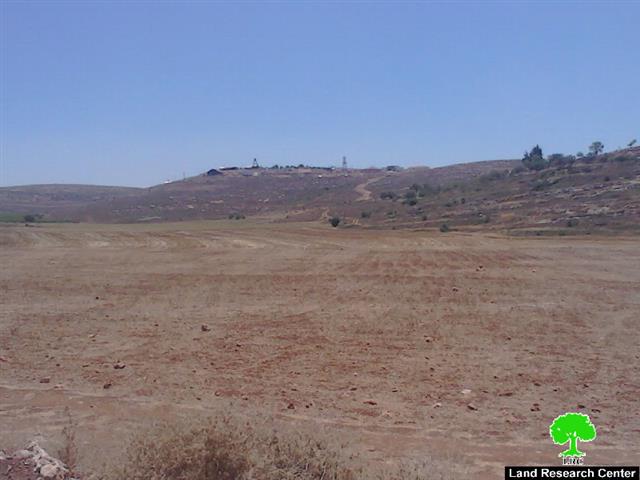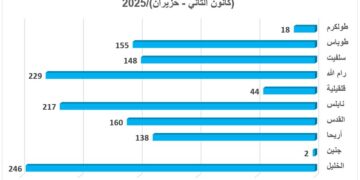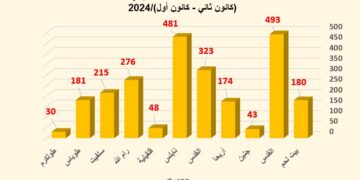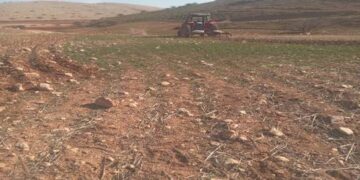Violation: destroying 13 dunums of wheat crops
Location: Jalud village- Nablus
Date: June 15, 2015
Perpetrators: Yesh Kodish colonists
Victims: farmers of Jalud
Details:
Wheat harvesting season is crucial for Palestinian farmers for what it has of financial and social importance for them. Fanatic colonists take advantage of this season to carry out attacks and violations that aim at destroying the life of the Palestinian farmer.
A group of extreme colonists from Yesh Kodish, which is located on confiscated lands from the Nablus village of Jalud on June 15, 2015, released their sheep and horses to graze in the wheat fields of Khallet Abu Shabraqa area, southeast Jalud village. The area is reported to be very close to the aforementioned colony.
Damages reached out 13 dunums planted with wheat due to horses running in the fields and sheep eating the crops.
The chairman of Jalud’s village council Mr. Abdallah Al-Hajj Mohammad told a researcher from Land Research Center the following:
“Colonists escalate attacks on farmers during wheat and olive harvesting season, the Israeli occupation army declare the fields as closed military zones to facilitate colonists’ attacks on farmers and their lands”.
A great part of Jalud’s adjacent lands to the peripheries of Yesh Kodish and Ahya outposts are considered a colonial interest of takeover and confiscation. The lands are reported to be of 300 dunums in area.
The “ghost” of colonization haunts Jalud:
Most of Jalud’s lands from the northern, eastern and southern sides became surrounded by six colonies and outposts namely (Shevut, Rahel, Shilo, Adi Ad, Kodish, Kida, and Ahya). The aforementioned colonies confiscated 1200 dunums for the favor of colonial activities and declared 90% (10000 dunums) of the village’s lands as closed military zones to protect and secure colonists in that area. This isolated the village and surrounded it with colonies; Jalud’s school is considered the separating point between the village and the colonies around. As a result, the lands of Jalud became unused where the lives of the village’s residents are now threatened.
Prepared by
The Land Research Center
LRC














